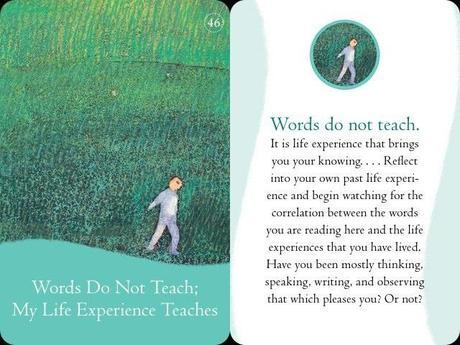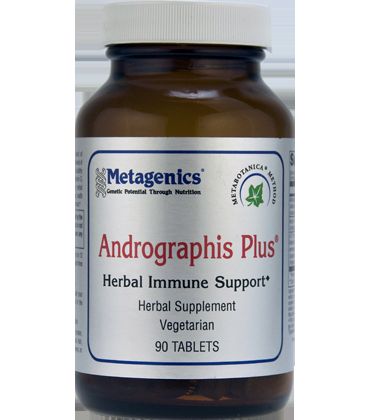
With the scorching heat of the summer still lingering (along with the wildfires and droughts), the Autumn season has begun nonetheless. There’s something about the slightly cooler evening breeze and the earlier sunsets that make it seem like Autumn even in Southern California where palm trees line the streets and it’s 70 degrees (with some slight variations) year-round. This is the time of year when we’re supposed to look back on previous months and years, take some time for reflection, and figure out what we need to change in order to improve ourselves and the world around us. So in the spirit of the Autumn season, I looked through some of my old writings and found this interesting piece about the Chinese Medicine perspective of how to prevent disease by living according to the seasons. There’s true wisdom in this ancient, highly complex system of medicine that has been evolving for over 2,000 years. Read the article below as it was printed in a local magazine, and please leave a comment below with your thoughts on the article. Did you find it useful? Interesting? Boring? Let me know!
adapted for Natural Awakenings Magazine, November 2007
As the heat of the summertime begins to wane, and beautiful fall colors begin to emerge, it’s important that we also adjust our lifestyle in accordance with our environment in order to retain our health and emotional well-being. According to the Neijing Suwen, a Chinese Medicinal text dating back to as early as 400 BCE (Unschuld, Paul U. Huang Di nei jing su wen: Nature, Knowledge, Imagery in an Ancient Chinese Medical Text. University of California Press, Berkeley and Los Angeles, California: 2003.), autumn is associated with the lungs, skin, hair, the large intestine, and immunity against invading pathogens. On a mental-emotional level, autumn is associated with a sense of direction in life, orderliness, nostalgia, and the expression of grief or sadness (Ni, Maoshing. The Yellow Emperor’s Classic of the Yellow Emperor. Beijing; Beijing Foreign Language Press: 2001.).
Chronic deficiency of the Lungs (on a physical or energetic basis) can lead high-performance individuals to “feel sad, disappointed, unsatisfied, and restless with a tendency to be easily annoyed,” or “longstanding unresolved grief accompanied by fear and angst,” according to Ted Kaptchuk, Doctor of Oriental Medicine and Professor at Harvard Medical School (Kaptchuk, Ted J. The Web That Has No Weaver: Understanding Chinese Medicine. Contemporary Books, New York, New York: 2000.). Indeed, I have successfully used acupuncture and herbs to treat the Lungs on a physical basis in order to improve the psychological condition of many patients exhibiting those symptoms.
In ancient Chinese Medicine, the body is perceived as a microcosm inside a larger macrocosm (the universe), thus exhibiting similar characteristics of our environment in a constant state of fluctuation. Because seasonal change occurs in a somewhat predictable cyclical pattern, we can often predict the changes our bodies will undergo seasonally. Traditionally, the fall has been a time in which foods were harvested and stored for the winter (perhaps many of you who are fortunate enough to have the time and land space for your own gardens still perform this ritual when the air turns cool and crisp each year), and fuel and warm clothing was acquired. This gathering and pulling inward reflects the contracting and downward movement that occurs within nature; tree sap descends towards tree roots, seeds dry, and trees drop their leaves and fruits (Pitchford, Paul. Healing With Whole Foods, Third Edition. North Atlantic Books, Berkeley, California: 2002.).
The contracting, inward energy of autumn makes it a time to organize ourselves, and retreat from the scattered activities of summertime. Give yourself some quiet time alone each day for meditation, journaling, and introspection. Take a class in figure drawing or painting, create a scrapbook of treasured photos and mementos, organize your closets and desk drawers, or install adequate storage shelving in your garage.
Preparing and eating foods that share the energy of autumn also helps prepare the body and mind for self-reflection and organization. Because of the fall season’s association with the lungs and nose, it is important to prepare warm, baked or sautéed meals which exhibit a hearty aroma. Taking time to enjoy the fragrance of your food before you eat it is most important during this time. Not doing so can cause one to overeat, or to eat when not hungry, which creates digestive imbalances that can lead to other chronic health problems over time.
The Neijing Suwen recognizes five flavors in foods and herbal medicinals: sour, bitter, sweet/bland, pungent, and salty. Although all flavors are necessary for adequate health, certain flavors should be either increased or decreased in the diet depending on the current season, as well as the internal state of each individual’s unique health constitution. During the early autumn, emphasizing more sour foods (such as vinegar, cheese, yogurt, sauerkraut, adzuki beans, green apples, and grapefruit) can help us prepare mentally and physically for the inward contemplation and organizational activities of the season. Because of the dryness that prevails during this time, those who experience increased thirst, dry skin, cracked lips, itchiness, or scratchy throat will benefit from foods which moisten the body (cooked spinach, baked pears, honey, full-fat yogurt and cheese, butter, black and white fungus (Chinese mushroom), lotus root, eggs, shellfish, sardines, sesame seeds, pine nuts). As Autumn progresses, emphasis on bitter foods (such as turnips an turnip greens, asparagus, celery, citrus peels, cabbage, broccoli) and salty foods (such as sea vegetables, Himalayan and Celtic sea salts, spirulina) help prepare us for the cold winter season by drawing body heat away from the surface of the body and into the deep core of the body. When the body is cooler on the surface and warmer on the interior, cold air in our environment is less noticeable. Those who have difficulty adjusting to cold weather should also emphasize warming foods (trout, salmon, black chicken, lamb, onions, leeks, quinoa, and walnuts) and cook with warm spices (black peppercorns, garlic, dried ginger, cinnamon, fennel seeds, and cloves) (Pitchford, Paul. Healing With Whole Foods, Third Edition. North Atlantic Books, Berkeley, California: 2002.).
While I was doing my internship at various Oriental Medicine clinics in San Diego, I got very accustomed to seeing patients with autumn dryness symptoms brought on by the Santa Ana winds. Most commonly, these patients suffered from dry throat and nasal passages, a sensation of heat below the sternum of the chest, and a lingering dry cough. I advised them to bake a pear with honey and fritillary bulbs or use an herbal product containing pear, fritillary bulbs, and other herbs that promote lung health, and this almost always alleviated the condition.
Within many different Traditional medical systems throughout the world, it is commonly said that the most superior form of medicine is proper nutrition, exercise, and adequate rest. When these methods fail to prevent unnecessary health conditions, herbs (many of which are regarded as highly potent “superfoods”) are required for restoration of total health. Because we live in a world in which we are constantly inundated with toxins, our food supply is severely depleted in nutrition, and we are so commonly “ungrounded” and disconnected from the Earth, I believe tonic herbs are necessary as daily supplements for prevention of health imbalances. If these safe and gentle methods of treatment still produce no improvement, one must resort to inferior herbs (harsh, toxic plant products and/or pharmaceuticals). After trying each of these methods, if one is still unable to find relief, alternative medicine (AKA surgery) may be utilized.
Jamie Koonce is a Doctor of Oriental Medicine in Hot Springs AR. She is certified by the NCCAOM and the CCAOM, and a graduate of the Pacific College of Oriental Medicine in San Diego.
PS: If you’re new here and haven’t read my bio or many of my older posts, I’m no longer practicing acupuncture in Hot Springs, AR. There was not much of a demand for it there, and I really didn’t enjoy living there for multiple reasons. Trying to make a living doing acupuncture didn’t work out for me even after I left Hot Springs and began practicing elsewhere, so I got postgraduate training in functional medicine and started a new approach which I call Health Coaching. I utilize the best of natural medicine from the East and the West, ancient and modern, to help you achieve your best health ever.
PPS: If you’re interested in the pear and fritillary bulb combination mentioned above, one excellent herbal product for cough and cold (with a dry, unproductive cough) is this one called Andrographis Plus by Metagenics. The formula is based on a Classic Chinese Medicine cough remedy, and it also has immune system boosting herbs that protect the lungs during harsh, dry, windy weather. If you have a tendency to get a cough during the wintertime, this might be a good product to stock up on before you actually need it. Start taking it in the Autumn season, and it may prevent you from getting sick in the Winter.

90 Tablets
Supplement Facts
Serving Size: 2 Tablets
Amount per Serving
Andrographis Leaf Extract 400 mg
(Andrographis paniculata) [standardized to 5% (20 mg) andrographolides]
Amla Fruit 3:1 Extract 400 mg
(Emblica officinalis)(containing tannins)
A 5:1† proprietary herbal extract blend of: 400 mg
- Glehnia Root (Glehnia littoralis), Apricot Seed (Prunus armeniaca), White Mulberry Leaf (Morus alba), Gardenia Fruit (Gardenia jasmi-noides), Soybean (Glycine max), Zhejiang Fritillary Bulb (Fritillaria thunbergii), Pear Fruit (Pyrus pyrifolia)
Ingredients: Microcrystalline cellulose, andrographis leaf extract, amla fruit extract, glehnia root extract, apricot seed extract, white mulberry leaf extract, gardenia fruit extract, soybean (soy), zhejiang fritillary bulb extract, pear fruit extract, cellulose, croscarmellose sodium, calcium silicate, stearic acid, silica, magnesium stearate, and coating (deionized water, microcrystalline cellulose, polyethylene glycol, and carrageenan.) Contains: soy.
DIRECTIONS: Take two tablets every two hours for 12 hours with unchilled water. Then take one tablet three times daily between meals for five days.
WARNING: Do not use if pregnant or nursing.

